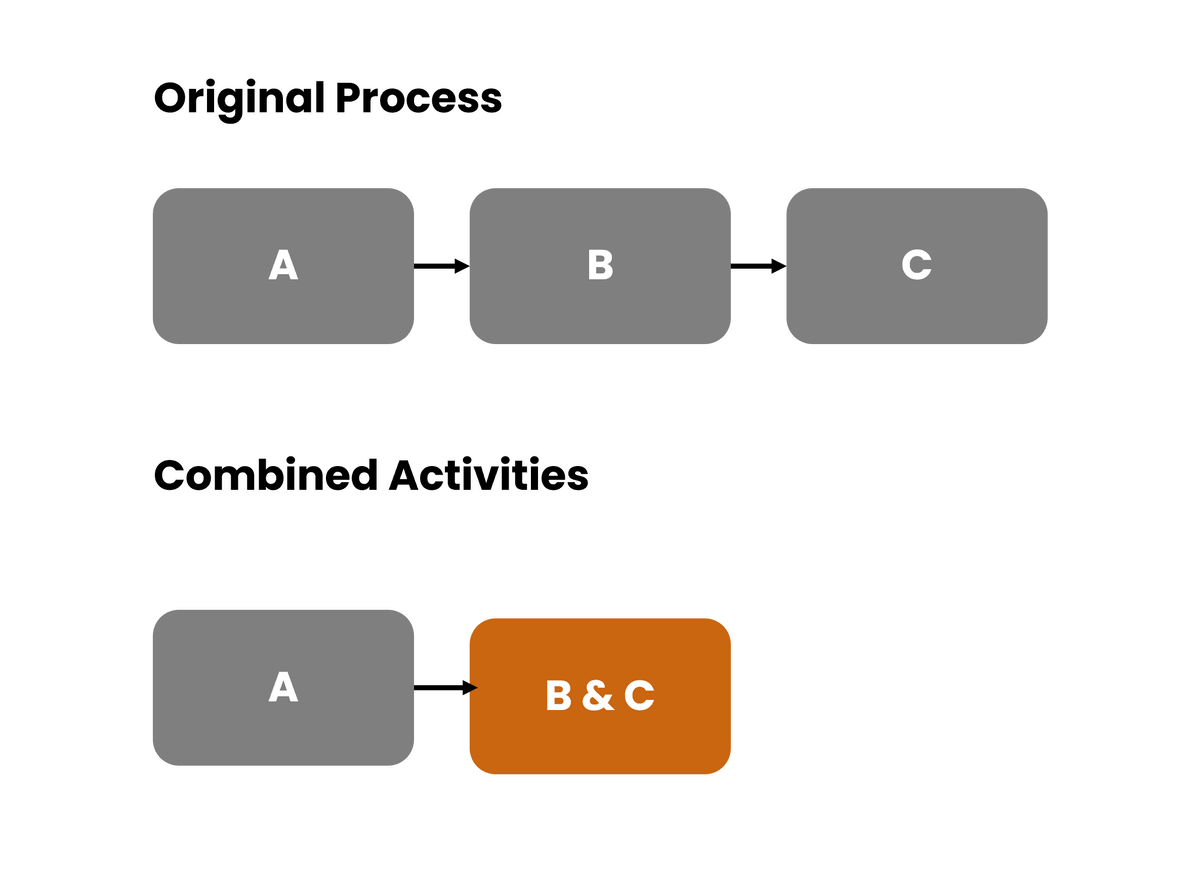Combine activities
Combine small activities into composite activities
A technique for combining smaller tasks into larger ones to reduce setup times and improve the quality of work.
Reijers, H., & Liman Mansar, S. (2005). Best practices in business process redesign: an overview and qualitative evaluation of successful redesign heuristics. Omega, 33(4)
Description
Task Combination is a process optimization technique that involves combining smaller tasks into larger ones. This technique reduces setup times, which are the time that resources need to become familiar with the specifics of a case, and can improve the quality of work. However, it is important to strike a balance between the size of the tasks and their workability. Tasks that are too large can result in smaller run-time flexibility and lower quality. Smaller tasks, on the other hand, can result in longer setup times.�

Performance considerations
By finding the optimal balance, organizations can achieve the best of both worlds: shorter setup times, higher quality, and greater flexibility.
Share this pattern
Enjoy these
Foundational free Patterns
Establish a case-based mindset
Remove batch-processing and periodic activities from your business process
Order knock-outs by least effort and highest termination probability first.
Consider whether activities may be executed in parallel
Move activities to more appropriate places
Consider to deepen or broaden the skills of resources
Let products appear greener
Automate for environmental impact
Implement automation in a sustainable way
Performance-based task assignment
Allocate tasks based on past performance: execution time and success
Allocate task based on collaborative experience: handover time, interactions, diversity
Share this
Connected to
Consider the division of a general activity into two or more alternative activities
Collect similar work items and work in batches